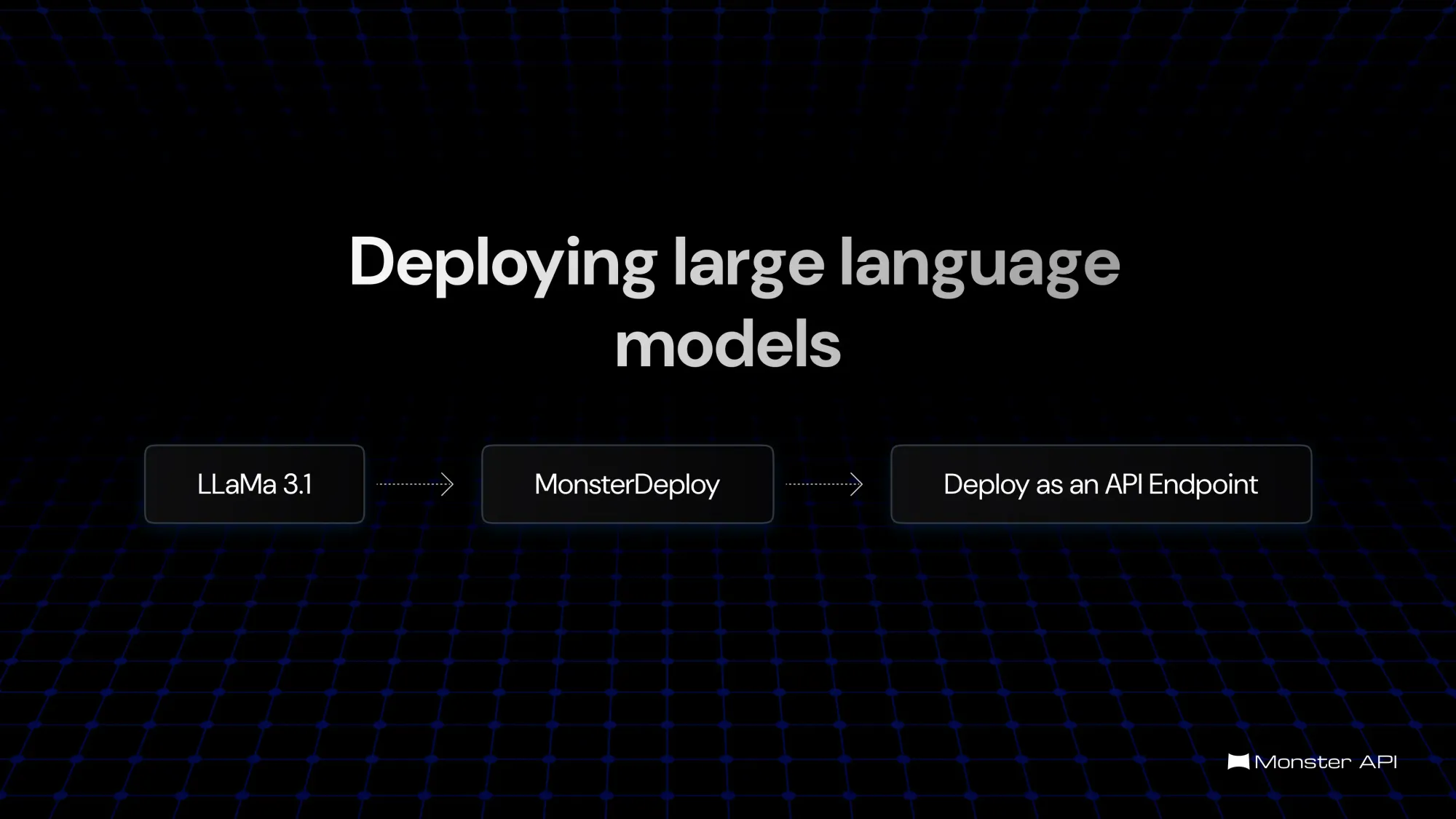Deploying Large Language Models: Navigating the Unknown
Deploying a large language model to fit a use case can be extremely challenging. Here are all the best practices to consider during LLM deployment.

Every business wants to leverage the power of AI models. However, using ChatGPT, Gemini, or any other out of the box AI chatbot won’t cut it for most organizations. This is where fine-tuning and deploying custom models come into place.
Let’s assume that company A wants an AI model that acts as a filter for support teams, sending tickets to the right agent based on the customer's concern. But, fine-tuning & deploying models can be expensive. From selecting the right model, fine-tuning it, and then deploying it, the process requires an enormous investment of time and effort.
In this guide, we’ll walk through everything you need to know—from making the build vs. buy decision to optimizing, deploying, and monitoring your LLM.
Build vs. Buy: Custom vs. Commercial LLMs
1. Benefits of Building an LLM
One of the first decisions when deploying an LLM is whether to build your own or use a commercial option. Building a custom LLM comes with several advantages, especially in terms of control and privacy. When you build your model, you retain complete ownership over your data. This not only allows for tighter privacy controls, but it also means you can fine-tune your model on data that is highly relevant and reliable, potentially reducing biases.
Another key advantage is customization. A custom-built LLM gives you control over model behavior, such as extending sequence lengths or implementing task-specific content filters. This flexibility can be especially useful if you're working with specialized tasks or domains. For instance, if the real-time response is critical, you can opt for a smaller, faster model that is optimized for speed without the latency issues that sometimes affect large commercial models.
Finally, smaller models designed for specific tasks may perform better than larger, general-purpose models—at a fraction of the cost. For example, domain-specific models like BioMedLM, with just 2.7 billion parameters, have outperformed much larger general models in their field.
2. Benefits of Commercials Models
On the other hand, training a custom LLM is expensive and resource-intensive. The high cost of pre-training is a major deterrent. For instance, training GPT-4 reportedly cost over $100 million. In addition to the financial investment, creating a successful LLM requires vast amounts of data and significant technical expertise.
Commercial models offer a more cost-effective solution for many use cases. By using a pre-trained LLM, you eliminate the need for large-scale training and the associated expenses. Commercial models like GPT-4 also provide the latest advancements in AI research and are an excellent starting point for experimentation and rapid prototyping. This makes them a practical choice for teams with limited resources or those exploring the potential of LLMs for the first time.
3. So Which Is Better?
Ultimately, the decision to build or buy depends on your organization’s specific needs. If your use case is highly specialized, building a model may offer better control, privacy, and performance. However, for teams that need general functionality or want to minimize costs, starting with a commercial model is often the best approach.
Open-Source Alternatives: Flexibility Meets Affordability
In addition to custom and commercial models, open-source LLMs provide a powerful middle ground. Models like Dolly, MPT-7B, and RedPajama offer commercial licenses and performance that can rival commercial models, all without the high costs of proprietary solutions.
While open-source models offer significant advantages, they come with challenges. Hosting and deploying these models requires significant computational resources, and reproducibility can be an issue without the right expertise. However, for organizations with the technical know-how, open-source LLMs provide a flexible, cost-effective way to deploy advanced language models at scale.
Optimizing LLM Performance
Regardless of whether you build, buy, or go open-source, optimizing your model for specific tasks is key to a successful deployment. Optimization strategies include prompt engineering, fine-tuning, and adding context retrieval capabilities.
Prompt Engineering: Maximizing the Value of Instructions
Prompt engineering involves crafting the right instructions to guide the LLM’s responses. While it may seem simple, creating effective prompts is an art form that can greatly impact your model’s performance.
The key to prompt engineering is clarity. The more specific and clear your instructions, the better your model will perform. For instance, prompts should provide context and examples, specify output format, and use clear delimiters to help the model focus on the most relevant information. A well-crafted prompt can reduce costs by encouraging concise responses, especially when paying for inference through API usage.
Fine-Tuning: Specializing Your Model
While prompt engineering is useful for many applications, some tasks require more customization than prompts can provide. Fine-tuning allows you to adjust a pre-trained model to specialize in specific domains by updating its parameters with domain-relevant data.
Traditional fine-tuning involves either freezing most of the model and updating only the final layers or re-training the entire model. Recent advancements like Low-Rank Adaptation (LoRA) and Parameter Efficient Fine-Tuning (PEFT) offer more cost-effective alternatives that still allow for highly specialized, high-performing models without the need for full-scale retraining.
Context Retrieval: Providing On-Demand Knowledge
Another way to boost LLM performance is through context retrieval. This technique allows you to provide additional context or knowledge that the model wasn't trained on, without needing to retrain it. You can store relevant information in a vector database, and when the model receives a query, it retrieves semantically similar data to use as context in generating a response. This is especially useful for improving responses to domain-specific queries.
Deployment Strategies: Choosing the Right Approach
Deploying an LLM is a complex process that requires careful planning, particularly around latency, resource management, and security.
- Latency and Cost Management
Different applications require different levels of inference speed. For real-time applications, latency is a critical factor. Optimizing for speed often involves selecting the right hardware (such as GPUs or TPUs) or reducing model size. On the cost side, running your own infrastructure can get expensive quickly, so careful resource planning and optimization are key.
- Resource and Security Considerations
When deploying large models, storage and memory requirements can be immense. Using multiple servers, model parallelism, or distributed inference can help address these challenges. On the security front, ensuring data privacy and compliance with regulations such as GDPR is essential, especially when handling sensitive data.
How MonsterAPI Makes LLM Deployment Easy
Businesses can get around all the challenges associated with LLM deployment using MonsterDeploy. With MonsterDeploy, deploying custom models can be done in a single click.
Compared to other LLM deployment options, MonsterTuner is affordable, can be done by anyone, doesn’t require constant server management, team of developers, and it’s 10X cheaper & faster.
Here’s a step-by-step guide on how to deploy a large language model on MonsterTuner:
- Login to MonsterAPI dashboard.
- Once logged in, click on the Deploy button in the left hand panel.
- When the new page opens up, click on Deploy an LLM.
- Set up the parameters and click on “Deploy”.
Post-Deployment: Monitoring and Iteration
The journey doesn’t end with deployment. Continuous monitoring of the model’s performance is critical to ensure it continues to function correctly and efficiently. LLMs are prone to hallucination and degradation, so keeping an eye on accuracy and refining prompts or context is an ongoing task. Monitoring resource usage is also vital to optimize costs and avoid waste.
Conclusion
Successfully deploying large language models requires careful planning, from deciding whether to build or buy, to optimizing performance, deploying with the right infrastructure, and monitoring over time. As LLM technologies evolve, new tools and strategies will continue to emerge, making this an exciting and rapidly changing space. Whether you’re a startup exploring the possibilities or a large enterprise leveraging AI for complex applications, understanding the tradeoffs and best practices will set you up for success.

